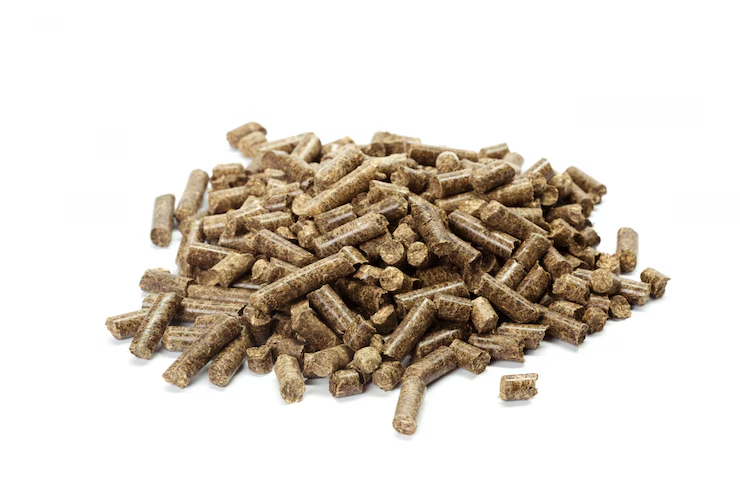Aquaculture has quickly become one of the most important sources of protein on the planet. As global demand for seafood keeps climbing, fish farming is stepping up to meet the challenge. But behind every healthy, fast-growing fish is a solid, nutritious pellet and behind every solid pellet is a good binder. Yep, that humble binder plays a huge role in the success of your aquafeed, and by extension, your entire operation. Let’s dive into why.
The Role of Pellet Binders in Aquafeed
Think of pellet binders as the “glue” of aquafeed. Without them, feed just doesn’t hold together. A good binder ensures your pellets stay compact, firm, and water-stable long enough for your fish to actually eat them.
It’s not just about keeping pellets intact, though. When pellets maintain their shape in water, nutrients are preserved, waste is reduced, and feeding becomes more efficient. That means your fish get the nutrients they need, and you get better results from every batch of feed.
Consequences of Poor Pellet Binding
When binders don’t do their job, the problems start stacking up fast. Pellets that break apart in water turn into a nutrient soup your fish won’t eat. That leads to poor growth, wasted feed, and rising feed conversion ratios. And let’s not forget the environmental side of things. Disintegrating pellets cloud the water and encourage bacterial growth, making your ponds harder to manage and your fish more vulnerable to disease. The bottom line? Weak binding doesn’t just hurt your feed. It hurts your productivity, your profits, and your sustainability.
Key Factors in Choosing the Right Pellet Binder
So, how do you choose the right binder for your aquafeed?
Start with water stability. If the pellets dissolve too quickly, your fish won’t get a chance to eat them. But water stability isn’t everything. The feed still needs to be palatable. Fish won’t eat what they don’t like. Digestibility matters too. A binder that makes the pellet tough might also make it harder to digest, which defeats the purpose. Another thing to think about is how the binder interacts with your feed formulation. Some binders work better with certain proteins or fats. And of course, cost is always a factor but the cheapest option isn’t always the most cost-effective in the long run.
Types of Pellet Binders and Their Properties
You’ve got options when it comes to binders.
Natural binders like starches, gums (like guar or xanthan), and alginates are popular for being safe, clean-label, and eco-friendly. They’re great when you’re looking for a sustainable solution that still performs.
Synthetic binders, such as lignosulfonates or polyacrylates, are often more powerful in terms of binding strength but may not be suitable for every formulation or environment.
Then there are functional binders, these are the rockstars. They don’t just bind; they also bring bonus benefits like immune support or probiotics. It’s like getting more muscle for your money.
Real-World Examples That Prove the Point
Let’s take a real-world example. A tilapia farm in central India saw a 25% improvement in pellet water stability simply by switching to a premium binder. Their FCR dropped from 1.9 to 1.6, and they saved thousands on feed costs. In another case, a shrimp hatchery battling murky water conditions noticed a massive reduction in suspended solids after adopting a functional binder. Cleaner water, healthier shrimp, happier farmers. These aren’t just lucky breaks, they’re the result of smart binder choices.
Best Practices for Binder Selection and Use
Choosing the right binder starts with understanding your farm’s specific needs. What species are you farming? What’s the feeding behavior like? How long do pellets need to stay stable in water? It’s always a smart move to test binders both in the lab and in the field. Lab tests give you a good baseline, but real-world conditions are where the truth shows up. Also, don’t go at it alone. Partner with experienced nutritionists and feed technologists and, most importantly, choose a trusted supplier. That’s where working with the Best Aqua Feed Pellet Binder Supplier really makes a difference. They don’t just sell products, they offer solutions.
Conclusion
Pellet binders may seem like a small detail in aquafeed formulation, but their impact is anything but small. From better feed efficiency to cleaner ponds and healthier fish, the right binder sets the foundation for long-term aquaculture success. It’s not just about holding the feed together it’s about holding your entire operation together. So if you’re still treating binder selection like an afterthought, it’s time to rethink your strategy. Evaluate your current approach, ask questions, run tests, and don’t hesitate to consult the experts. At Dr. Katre Premix Lab, we help farmers and feed manufacturers make better decisions with top-tier binder technologies and a deep understanding of aquafeed science. Let us help you turn every pellet into a performance booster.


